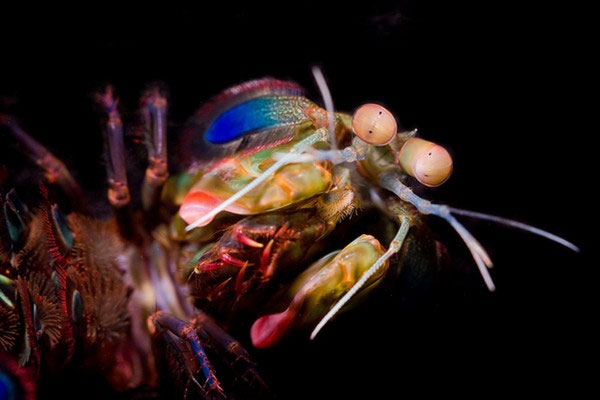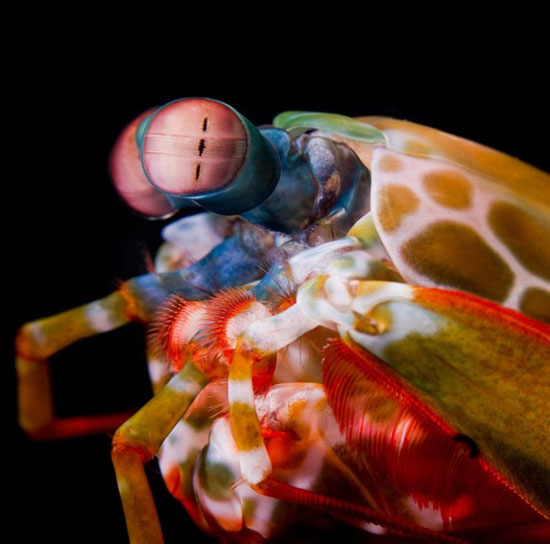Discovering new abilities of mantis shrimp
Researchers at the University of Queensland, Australia have recently discovered an extremely useful ability of mantis shrimp (Mantis shrimp). It is the eye part of this creature that is able to see a series of cancer cells in the human body.
>>>10cm shrimp pushes 90kg heavy objects
Through research, experts say, the mantis shrimp eye has the ability to distinguish colors very well because there are 12 types of color receptors, while this figure in humans is only 3.
In addition, mantis shrimp also has the ability to see ultraviolet, infrared and polarized light so it is considered to be the most complex vision of every known animal.

Experts have recently discovered another great ability of mantis shrimp eyes, which is to be able to detect polarized light - a type of light that reflects the difference of tissues, including healthy cancer cells strong.
Justin Marshall, who led the study, said: "Mantis shrimp have the ability to distinguish colors, shades or contrasting objects, such as a red apple on a green apple. But research. We also found this creature to use polarized light to detect and distinguish objects. "
Further research, experts found, the eyes of the mantis shrimp are complex, containing about 10,000 units of ommatidia visual acuity for each eye.
However, each row of ommatidia has specialized capabilities. In some individuals, mantis shrimp use these ommatidia to detect light, others to identify colors . But each ommatidia has the ability to filter polarized light as well as light sensitive receptors. shining.

Experts conducted a test using a specialized machine to scan the body of a cancer patient and monitor that cell activity but not fully.
They found that, while the current imaging system uses polarized light to detect cancer cells, if we reproduce the superhuman ability in the eyes of the mantis shrimp, we will be able to transmit Early oncology and minimizing biopsy time.
The researchers hope that this finding will help experts open new hopes for detecting and early diagnosis of cancer cells.
- Eyes of mantis shrimp
- Video: Scary weapon of hammerhead shrimp
- Animals possess supernatural powers
- Eyesight of mantis shrimp reveals a new observation mode of animals
- Developing cameras for unmanned vehicles simulating mantis shrimp sight
- Video: See the surface of the clam shell
- 10cm shrimp pushes 90kg heavy objects
- 10cm long and living in the ocean, this creature can change the world
- The unbelievable 'transcendental' abilities of insects
- Video: Praying mantis still mating
- Pick up strange shrimps, bring them to feed and bitterness
- The unusual eyes of animals (II)
 Surprised: Fish that live in the dark ocean still see colors
Surprised: Fish that live in the dark ocean still see colors Japan suddenly caught the creature that caused the earthquake in the legend
Japan suddenly caught the creature that caused the earthquake in the legend A series of gray whale carcasses washed ashore on California's coast
A series of gray whale carcasses washed ashore on California's coast Compare the size of shark species in the world
Compare the size of shark species in the world